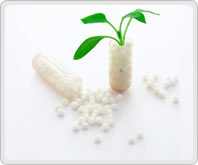Get introduced to the Healthy you, to the Beautiful you, to the Real you
00 91 987 357 9007
Homeopathy Remedies

'Remedy' is a technical term in homeopathy which refers to a substance prepared with a particular procedure and intended for treating patients. Homeopathic remedies are obtained from vegetable, mineral and animal substances which are later processed. After obtaining the refined product it is used to treat a wide range of ailments like acute infections, injuries, chronic diseases and emotional disorders. Remedies are carefully selected according to the patient's symptoms which later on stimulate the body's own defense system to heal body, mind and spirit without any toxic side effects.
Homeopathic practitioners rely only on two types of references when prescribing remedies ‘Materia Medica’ and ‘Repertories’. In Homeopathy Materia Medica is a collection of ‘drug pictures’ which are organized alphabetically according to the remedy, which describes the symptom patterns associated with individual remedies. While a homeopathic ‘Repertory’ is an index of disease symptoms that lists remedies associated with specific symptoms.
Homeopathy Medicines are made up of animal, plant, mineral, and synthetic substances which make them harmless, without having any side effects. Some of the popular Homeopathic Medicines are Opium, Thyroidinum (thyroid hormone), Natrum Muriaticum (sodium chloride or table salt), Lachesis muta (the venom of the bushmaster snake), Arsenicum Album (arsenic oxide) and many more.
Homeopaths also use treatments called ‘nosodes’ (derived from the Greek word 'nosos' which means disease) which are made from pathological products such as Fecal, respiratory discharges, tissue and blood. Those Homeopathic remedies which are prepared from healthy specimens are called Sarcodes.
With the recent developments the modern Homeopaths use more esoteric bases for remedies which are known as ‘imponderables’. These remedies are prepared not from natural substances but from electromagnetic energy which is derived from alcohol or lactose.
Technological and Scientific advancement also blessed the Homeopathic way of treatment. Now more and more Homeopaths use sophisticated technology and instruments for detailed diagnosis which helps them to figure out the exact cause of the disease. After knowing the exact cause Homeopath gives suitable medicines which catalyzes the natural healing process of the patient's body.
Homeopathic remedies work by stimulating the body's own healing abilities. The same homeopathic principles were applied in the 1800's when vaccination was discovered. The disease substance from the cowpox was injected into humans to prevent smallpox. Cowpox and smallpox, two different diseases, shared some similarities. This is an example of how vaccination is based on homeopathic principles.
In preparing remedies for diseases, Homeopath uses the basic process called ‘dynamisation’ or ‘potentisation’, whereby a substance is diluted with alcohol or distilled water and then vigorously shaken by ten hard strikes against an elastic body in a process called ‘succussion’. While Hahnemann advocated the use of substances which produce symptoms similar to those of the disease being treated, he found that material doses would intensify the symptoms and exacerbate the condition, sometimes causing what amounted to dangerous toxic reactions. He also believed that the process of succussion activates the vital energy of the diluted substance. For this purpose, Hahnemann asked a saddle maker to construct a special wooden striking board covered in leather on one side and stuffed with horsehair which was used to grind insoluble solids particles of quartz and oyster shell.
Some other popular Homeopathy Remedies are:
Isopathy: Isopathy is a type of alternative treatment which is closely related to homeopathy. It was invented by Johann Joseph Wilhelm Lux in the early 1800. The fundamental difference between Isopathy and Homeopathy is that Isopathy uses remedies that are made up from the cause of the disease or from things that the disease produces. These remedies are called ‘nosodes’ which are further divided into auto and sarcodes. This medicinal treatment is similar to homeopathy because homeopathic vaccines have elements of Isopathy.
Flower Remedies: It is the medicinal treatment in which dilutions of flower material is used in a 50:50 solution of water and brandy. The remedies are extremely dilute as they do not have a characteristic scent or taste of the plant. This alternative was developed by Edward Bach, an English physician and homeopath in the 1930. In this treatment the ‘energetic’ nature of the flower is transmitted to the user which helps in healing various disorders like depression, anxiety, insomnia and stress. Though this alternative treatment is associated with homeopathy but it is different from Homeopathy as they don’t follow the principles of the law of similar.
-
 Homeopathy in India
Homeopathy in India - About Homeopathy
- Origin and History
- Homeopathy Remedies
- Homeopathic Medicines
-
 Ayurveda in India
Ayurveda in India - About Ayurveda
- Origin and History
- Kerala Ayurveda
- Ayurvedic Therapies
- Ayurveda in Daily Life
- Ayurvedic Medicines
- Ayurveda Resorts / Shalas
- Kerala Ayurveda Resorts
-
 Yoga in India
Yoga in India - About Yoga
- Origin and History
- Types of Yoga and Yoga Positions
- Yoga Therapies
- India Yoga Centers
-
 Meditation in India
Meditation in India - About Meditation
- Origin and History
- Techniques and Postures of Meditation
- Benefits of Meditation
- India Meditation Centers
-
 Spa in India
Spa in India - About Spa / Introduction
- Origin and History
- Spa Treatments
- India Spa Resorts
- Ananda Spa Resort
-
 Naturopathy in India
Naturopathy in India - About Naturopathy
- Origin and History
- Naturopathy Treatments
- Naturopathy Centers in India
Copyright © 2020, www.IndiaWellness.org
Recognized by Ministry of Tourism, Government of India
National Tourism Award Winner
Powered by SOFTTIX






